There are many sports that require fast movements, agility, and stability, including basketball and volleyball. Although both sports require supportive footwear, it’s important to understand how the shoes designed for each sport differ from each other.
The purpose of this article is to examine whether Can You Wear Basketball Shoes For Volleyball is an appropriate option, taking into account the demands of the sport and the specific features of basketball shoes.
You must prioritize your footwear as a volleyball player, as it affects your performance and safety. The similarities between basketball and volleyball cause many athletes to wonder if they can wear basketball shoes for volleyball. The purpose of this article is to explore the topic and determine if Can You Wear Basketball Shoes For volleyball.
Are Basketball Shoes Good for Volleyball?
In contrast to basketball shoes, volleyball shoes are not appropriate for volleyball players. Basketball shoes receive more attention and resources than volleyball shoes, as they are not as popular. Volleyball shoes are not as durable as basketball shoes, and they are less suited to use outside of volleyball.
The Importance of Proper Footwear in Volleyball
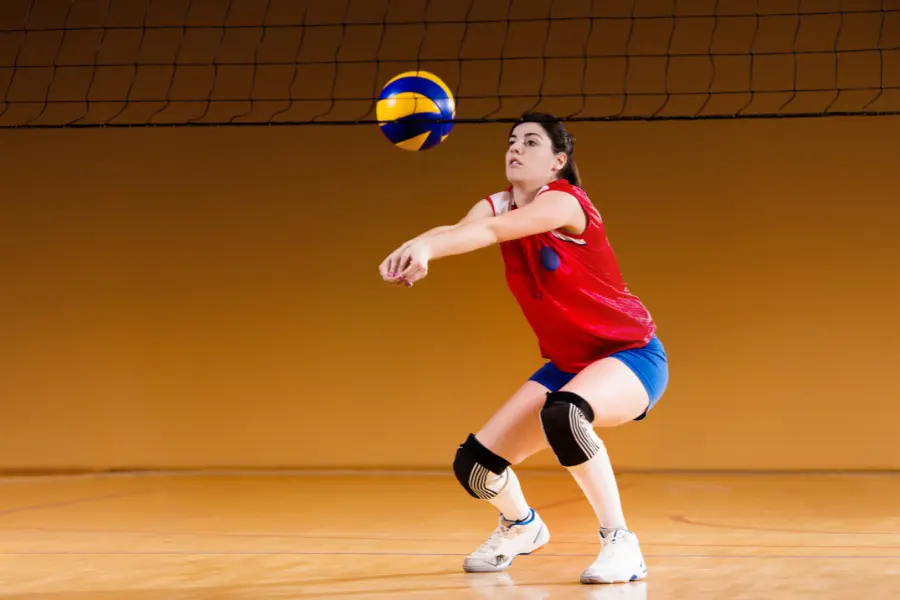
There are frequent lateral movements, jumping, and sudden changes in direction in volleyball, which is a fast-paced sport. Your performance can be enhanced and injuries can be prevented with the right footwear. For volleyball, shoes are specially designed to provide stability, cushioning, and support.
You may enjoy reading Can You Wear Tennis Shoes For Volleyball?
Key Difference Between Volleyball and Basketball Shoes
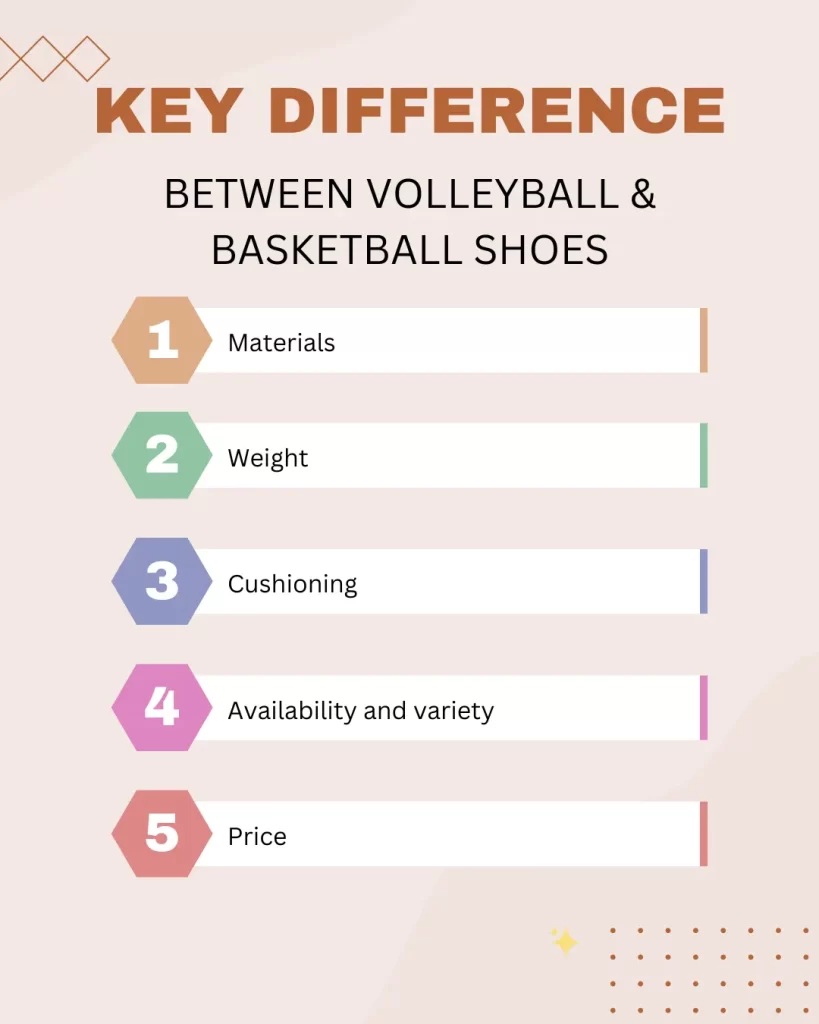
While basketball vs volleyball shoes differ in some ways, they’re usually pretty minor and don’t always apply.
Materials
It’s mostly synthetic mesh uppers, rubber outsoles, and foam midsoles that distinguish basketball shoes from volleyball shoes. Despite some basketball shoes being made from leather or canvas, the vast majority are made from the same material as volleyball shoes.
Weight
There is definitely a tendency for basketball shoes to be heavier on average. The reason for this is that these shoes have higher uppers and more cushioning technology in the midsoles.
Due to the extra weight in the midsole, basketball shoes tend to be lightweight and springy despite their higher weight. The extra weight you put on your spikes will not lower their height.
The relationship between shoe weight and vertical jump performance has not been found to be statistically significant in our research.
Cushioning
The midsole cushioning in volleyball shoes is by far the biggest difference between them. In volleyball shoes, the midsoles are thinner and lighter because there is less cushioning.
For maximum shock absorption, some basketball shoes stuff as much material as possible into their midsoles. The different cushioning systems are quite unique and offer slightly different on-court experiences, despite having different ways of saying ‘foam’.
Softer/mushier cushioning systems are preferable to hard cushioning systems. The responsiveness of some is excellent, while that of others is not so good.
Availability and variety
Compared to the basketball shoe market, the volleyball shoe market is extremely small. Volleyball shoes account for virtually no portion of the athletic shoe market, while basketball shoes used to make up 13% of it.
There are currently 22 players in the NBA with their own signature shoe line. Volleyball shoes aren’t even available in 22 types! This season, there were almost 300 different types of basketball shoes worn in the NBA. Basketball shoes can be found to suit almost every volleyball player’s needs.
Do you want to catch up on the hottest volleyball shoe of 2023, the Nike Hypersets? There is no way to get them. There are none left. It’s been months since they sold out! Nowadays, it’s quite difficult to find volleyball shoes online. You’ll have a hard time finding an item in your size since availability is low across the board.
Price
Basketball shoes are generally cheaper on average than volleyball shoes, although the top of the line basketball shoes are usually more expensive. Due to the fact that I spend my days writing volleyball shoe roundup articles, which usually feature a lot of basketball shoes, I am quite aware of this fact!
Budget basketball shoes are also easier to find than budget volleyball shoes, which are hard to find.
You may enjoy reading Best Volleyball Bags & Backpacks
Can You Wear Basketball Shoes for Volleyball?
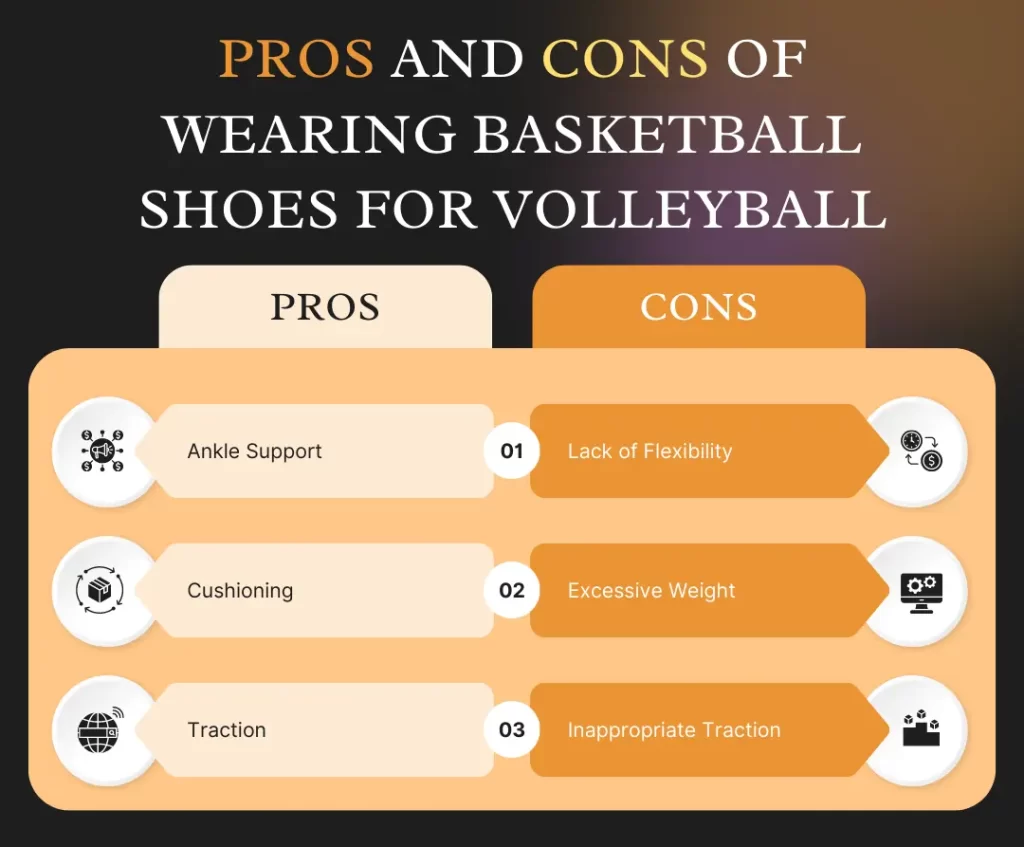
While it may be possible in certain situations to wear basketball shoes for volleyball, it is not ideal. Let’s consider the pros and cons.
Pros of Wearing Basketball Shoes for Volleyball
- Ankle Support: Players with an ankle injury history benefit from the excellent ankle support provided by basketball shoes.
- Cushioning: Basketball shoes offer excellent cushioning, allowing you to land and jump more comfortably.
- Traction: Basketball shoes have traction patterns that offer good grip on indoor courts and allow quick lateral movements.
Cons of Wearing Basketball Shoes for Volleyball
- Lack of Flexibility: Basketball shoes are generally less flexible than volleyball shoes, which makes it difficult for volleyball players to perform quick footwork and agility.
- Excessive Weight: Basketball shoes are typically heavier than volleyball shoes, which can slow the player down.
- Inappropriate Traction: Different volleyball court surfaces call for different types of traction for basketball shoes, which can increase the risk of slips and falls.
In order to maximize performance, minimize injury risks, and adapt to volleyball’s specific requirements, some players might find basketball shoes acceptable for occasional use in volleyball.
What Type Of Shoe Is Best For Volleyball?
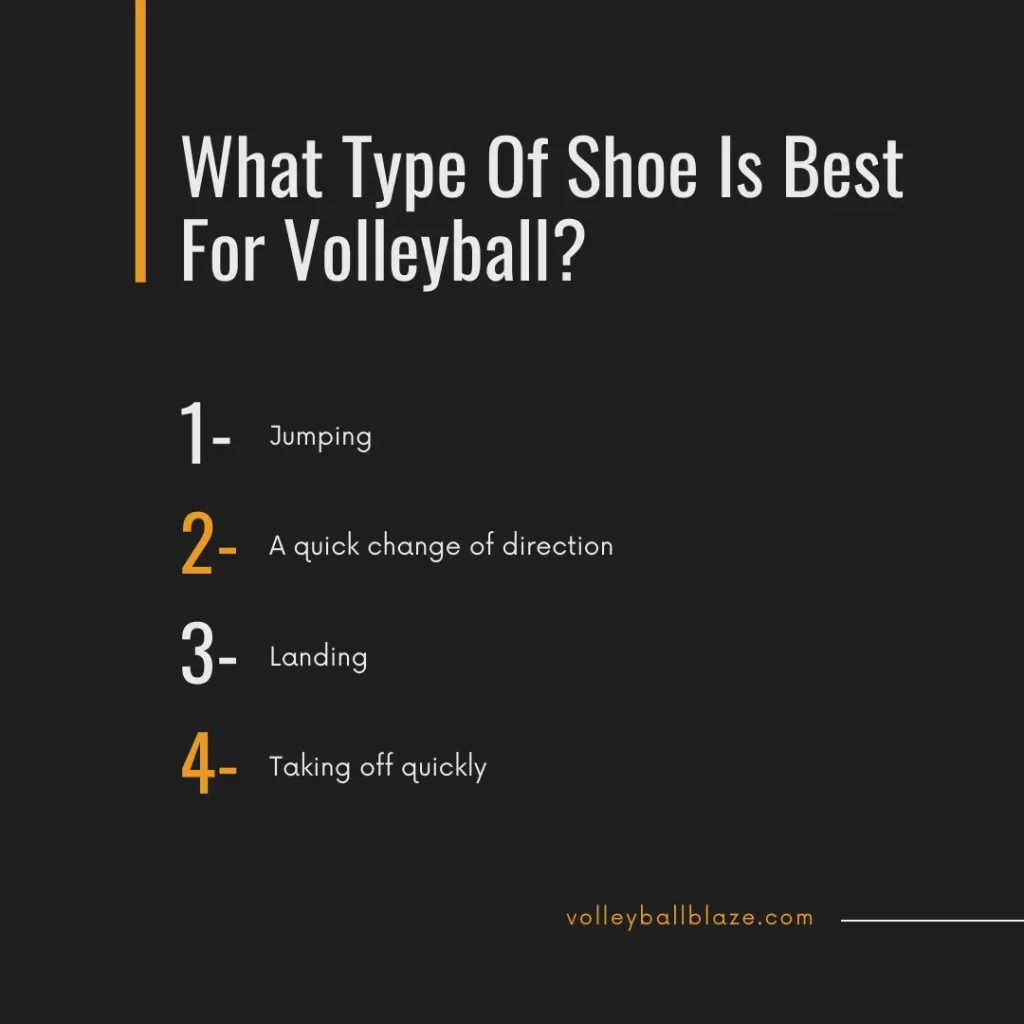
Our question really is: what makes a good volleyball shoe? You should also keep an eye out for a few basic things. Besides that, your volleyball-ing feet’s shape, style, and preference will mostly determine what you wear.
Taking each of these actions and skills into account will enable us to determine what kind of shoe would be most beneficial:
1. Jumping
2. A quick change of direction
3. Landing
4. Taking off quickly
1. Jumping
Volleyball is a sport for jumpers. Athletes in our sport with great vertical leaps need shoes that bounce at takeoff and cushion at landing.
It’s also worth mentioning that volleyball players jump two feet high.
A shoe that permits a light one-foot takeoff will be beneficial to basketball players, but volleyball players jump off two feet most of the time (with the slide being an exception…).
The best shoe for two-foot jumps is one with a thick air-bubble heel.
The definition of ‘muscling your way through the air’ that once described me is probably pretty accurate for me. For heavy jumpers like myself, a thick, stiff heel shoe will probably be more comfortable.
2. A quick change of direction
A volleyball shoe must also be capable of handling those violently squeaky turns – the only sound to fill the gyms and halls of volleyball tournaments around the world.
Shoes with rounded bases allow you to push off evenly from different angles, and basketball shoes are particularly good at this.
When I was playing professional football in Switzerland, I had a pair of Kyrie 3s with a rounded soles that I really liked. My hands were really easy to push off in all directions–if I hadn’t destroyed them playing tennis on clay, I probably would have used them forever…
3. Landing
A rise must be followed by a fall. It can be physically demanding to jump repetitions over and over again.
How good or bad your shoes are for your body must depend on them, right?
Interestingly, a 2017 study looked specifically at this question, and we’ll examine their findings below.
Now that you’re playing a high-impact sport like volleyball, a pair of shoes with decent cushioning is something you need to keep an eye out for.
I’m referring to ‘high-impact’ ground reps here. It doesn’t take much impact for jumping to damage your knees and lower back over time, but you don’t have to impact anyone else for it to do damage.
4. Taking off quickly
All it takes is a good grip. Volleyball is all about getting where you need to go fast, so make sure you have a sticky grip for the quick directional changes mentioned in 2. A quick take-off can help you better position yourself to play the ball as it approaches, whether you are attacking a short set or receiving on a missile jump serve.
Basketball shoes are known for their grip. Also, they tend to be nice and snug-fitting, with a high ankle if you like that style. You will also want to look for a shoe that has a tight binding to aid your take-off.
Are Volleyball & Basketball Shoes The Same?
There are some differences between them, but they’re more similar than they are different.
The evolution of volleyball shoes into basketball shoes
Volleyball shoes have been resembling basketball shoes for the past decade unless you’ve lived under a rock!
This is the Nike React Hyperset, one of the most popular volleyball shoes on the market today. Their basketball predecessors, the Nike Hyperdunks, have almost identical outsoles and midsoles. Basically, Nike marketed a volleyball shoe that was basically the same as one of its more popular basketball shoes. The solution worked… Well, actually.
Professional volleyballers around the world wear Hypersets, which are basically basketball shoes copied and pasted for volleyball! You’ll notice more basketballization of Asics volleyball shoes if you look at them closely.
An untrained eye might mistake the right shoe for a basketball shoe. It’s been endorsed by Japanese superstar Yuji Nishida and is rated as the best volleyball shoe of 2023.
It is traditional to distinguish volleyball shoes from basketball shoes, and I will discuss this shortly. In order to understand why you should be open to wearing basketball shoes to volleyball, I will first explain why you should be open to it.
Why You SHOULD Wear Basketball Shoes For Volleyball
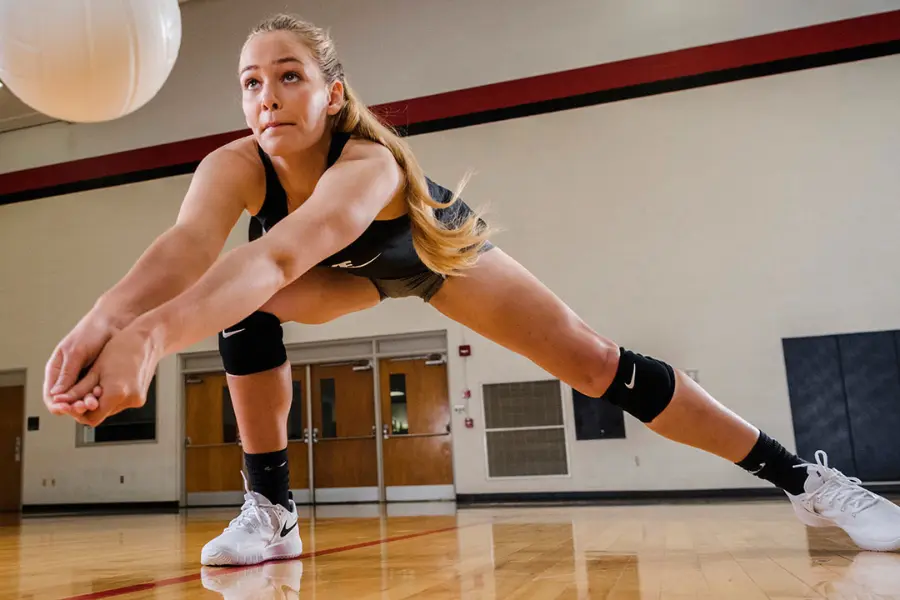
It all comes down to performance at the end of the day.
It is imperative that volleyball players wear shoes that make them perform at their best on the volleyball court. If it’s the best option for you as a volleyball player, no matter whether it’s a volleyball shoe, basketball shoe, or horseshoe, you should wear it!
Position-specific volleyball options
What volleyball shoe manufacturers haven’t fully grasped yet is. There is no one-size-fits-all when it comes to positions.
Due to the differences in movements between liberos and middle blockers, these two positions should wear very different shoes. There have never been any distinctions based on position in volleyball shoes historically as they all cater to the sport as a whole.
Conversely, the basketball shoe industry has thousands of times more variety, each shoe with its own features, strengths, and weaknesses. You’ll find a much larger selection of basketball shoes that fit your individual needs if you’re a middle blocker, libero, or setter.
- Volleyball shoes: good for all positions in volleyball.
- Basketball shoes: great for certain positions, terrible for others.
This will work in your favor unless you play middle blocker and libero at the same time.
High flyers get more bounce
Getting that extra pop or spring when jumping isn’t really something you get from volleyball shoes. The bouncy feedback provided by many basketball shoes makes playing in them very enjoyable, especially for spikers.
My only recommendation for volleyball shoes is the Asics Sky Elite FFs. However, the Lebron 18 and Air Zoom G.T. Jump give you the feeling of running on trampolines inside your shoes!
Frequent flyers need better cushioning
A volleyball shoe’s shock absorption is perhaps its most important feature. What is the strength of the cushioning system? How well does it absorb landing forces?
Joint health is the reason for this question’s importance. In addition to your knees, your ankles, hips, and back also suffer from poor shock absorption.
The importance of impact protection cannot be overstated if you play volleyball frequently. Overuse injuries, such as jumper’s knee, can seriously harm you if you don’t take care of yourself. The cushioning in most basketball shoes is superior to that in most volleyball shoes by a wide margin.
Basketball shoes don’t all provide good impact protection… But those we’d choose for volleyball have the most sophisticated cushioning technology of any sports shoe.
In this case, basketball shoes are almost always the best option if you’re jumping a lot (i.e. don’t play libero or setter).
The cost of basketball shoes is lower
In spite of the fact that a decent pair of basketball shoes will cost a little less than their volleyball counterparts, you will have to pay more for the most expensive pair.
Also, there are quite a few budget basketball shoes that are quite a bit less expensive than volleyball shoes.
Which Basketball Shoes Are Best For Volleyball?
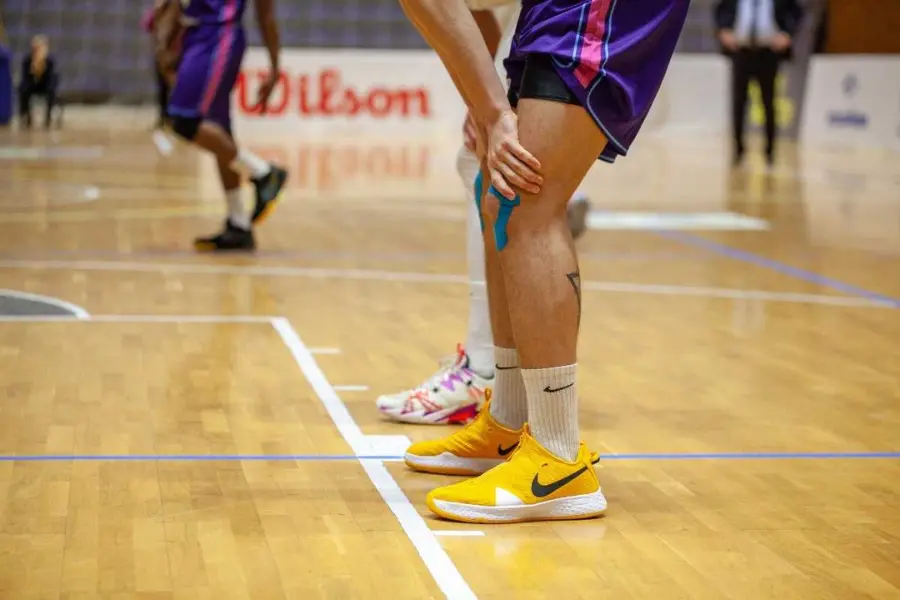
Volleyball shoes are largely similar to basketball shoes. Picking the right shoe is more important than anything else.
To make things easier for you, I have gone through every basketball shoe on the market and compiled a list of the best shoe for every volleyball position!
Is it okay to play volleyball in high tops?
Due to their restriction of ankle mobility, some high tops aren’t ideal for volleyball. Depending on the position (such as middle blocker and opposite), other high tops might be better than the Nike Air Zoom G.T. Jumps.
Due to their hybrid nature, they require less lateral dexterity compared to mid or high-tops.
High-top shoes that are designed for setters, liberos, and outside hitters who spend more time passing and chasing down volleyballs may not be appropriate for them.
Basketball Shoes For Volleyball: Things To Avoid
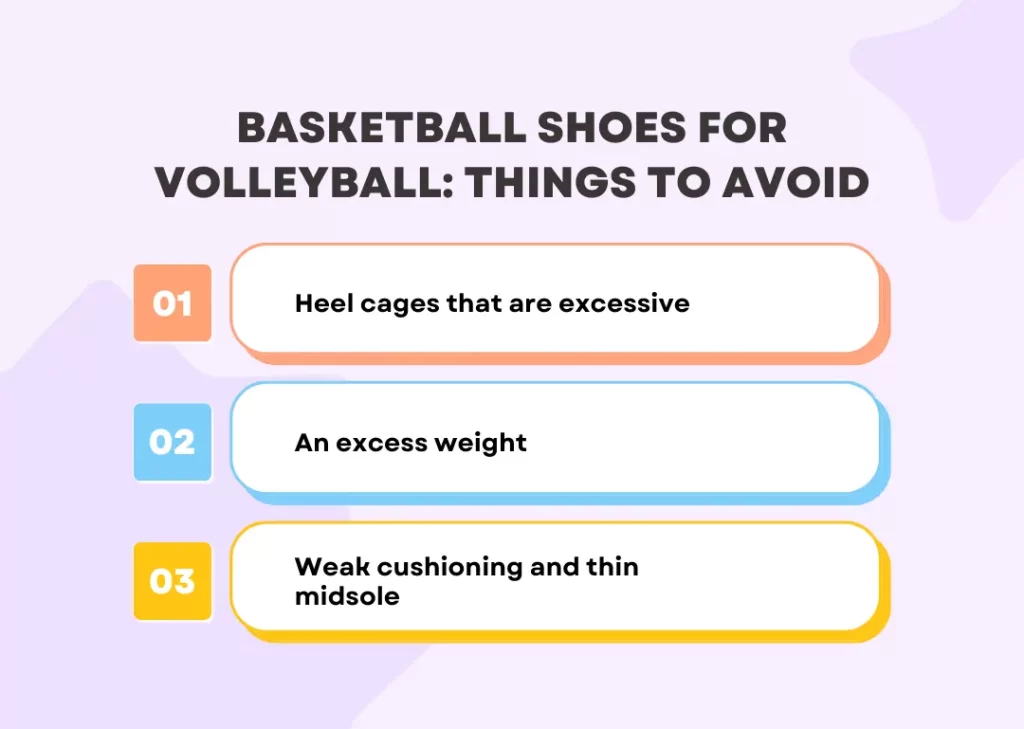
When you try on some basketball shoes, they can turn out to be terrible.
You should be aware of these major red flags.
Heel cages that are excessive
There is a large ‘built out’ protective cage around the heel of the shoe that gives the shoe a clunky, boot-like appearance. This heel cage serves both as a protective device and as a decorative accessory.
My only issue with these shoes is that they tend to weigh down a lot and make quick lateral movements and adjustments difficult.
My Jordans are once again excessively caged. If I had to wear the above shoes while playing volleyball, I could never do it. There is just a feeling of slowness and unresponsiveness when moving into them.
Wear shoes without caged heels as much as possible!
An excess weight
As long as they feel lightweight and athletic, a shoe can weigh a lot and still be fine for volleyball. For example, consider the Jordans above. You feel as if you have bricks attached to your feet, but they’re not actually all that heavy.
A hard midsole and very little forefoot flexibility are characteristics of these shoes. It feels like they are wearing boots. It would be impossible for me to play basketball or volleyball in them.
As opposed to Jordans, my Dame 7s feel incredibly lightweight despite weighing more than them. Putting too much weight on weight is a tricky business.
Weak cushioning and thin midsole
Liberos should be aware that a thin midsole with below-average cushioning is perfectly acceptable (and recommended). The impact protection you need is not needed since you are not doing any jumping.
Shoes with low shock absorption can be deliberately chosen by setters who primarily operate out of the backcourt. The responsiveness of these shoes will usually make up for any lack of cushioning.
If you’re spiking, you should make sure your shoes have a decent cushioning setup. When you’re looking at shoes, find out what cushioning is used in the midsole and research what people think about it online.
Can You Wear Volleyball Shoes For Basketball?
Because of all the reasons we just discussed, volleyball shoes are absolutely appropriate for basketball. In almost every aspect, volleyball and basketball shoes are similar, so you can use them interchangeably.
It isn’t like we are talking about wearing running shoes while playing volleyball. Since I have played basketball and volleyball for over a decade, I’ve twisted my ankles far more playing basketball than volleyball, so I would recommend lateral stability/ankle support shoes for basketball.
Why Don’t Basketball Players Wear Volleyball Shoes?
What would make them do that?
A quality range of basketball shoes is produced by a market hundreds (if not thousands) of times larger than the volleyball shoe market. Because volleyball shoes are not up to snuff on the market, we are discussing basketball shoes for volleyball.
To be perfectly honest, there are simply better options available if you broaden your horizons a little. There isn’t enough selection or specification, very little availability, and pretty limited availability. It’s like asking why volleyball players don’t wear tennis shoes.
FAQs
Can you use Jordans for volleyball?
It depends on the design of the Jordans and whether they are suitable for volleyball. You should be aware of excessive heel caging in Jordans, which makes volleyball extremely difficult.
The ‘Jordan Why Not?’ sneakers I own belong to me. It was impossible to think of a worse shoe to play volleyball in than the Zero.4s!
Do Kyrie Flytrap shoes work well for volleyball?
Despite their decent performance, I would only recommend the Kyrie Flytraps to setters, liberos, and outside hitters.
They’re not the best jump shoes because the Phylon cushioning is very rudimentary. Despite that, they are lightweight, responsive, and low to the ground.
Can basketball shoes provide enough ankle support for volleyball?
A basketball shoe offers good ankle support, but it might limit your ability to move agilely when playing volleyball.
Do volleyball shoes work well on different court surfaces?
In addition to hardwood and rubberized flooring, volleyball shoes are designed to provide optimal traction on sand and other surfaces.
How important is proper footwear in sports?
It is crucial that athletes wear the right footwear to ensure their comfort and safety. On the field or court, it allows athletes to move efficiently, prevents injuries, and enhances their overall performance.
Do KD14s work well for volleyball?
Because of their excellent traction and cushioning, the KD14s are excellent volleyball shoes. It is ideal for both middles and opposites since these shoes have such advanced cushioning technology. According to my list of the best basketball shoes for volleyball in 2024, the KD14s came in second!
Do Curry 8s/9s work well for volleyball?
Basketball shoes such as the Curry shoes are excellent for volleyball as well. Because of their low profile and responsiveness, this is a favorite option for liberos and setters.
Can PG 5s/6s be used for volleyball?
It is okay to wear PG basketball shoes for volleyball, but they aren’t the best. Despite the excessive caging in the heel, this shoe is difficult to use in volleyball due to its difficulty in performing lateral movements. In addition to solid cushioning and excellent traction, the PG shoes are excellent volleyball shoes if that doesn’t bother you too much.
Can I use basketball shoes for volleyball?
Yes, you can use basketball shoes for volleyball, but it is recommended that you wear shoes designed specifically for volleyball in order to achieve the best performance and prevent injuries.
Are volleyball and basketball shoes the same?
Basketball shoes and volleyball shoes have some similarities, but they are designed for different movements. Jumping and landing are the primary concerns of volleyball shoes, while lateral movements are the primary concern of basketball shoes. Sport-specific shoes are recommended to ensure optimal performance and prevent injuries.
Conclusion
Basketball shoes may be beneficial for ankle support, cushioning, and traction in basketball, but they aren’t ideal for volleyball.
To perform at their best and maintain their safety, volleyball shoes must be designed specifically for the movement, the surface, and the design features of the game. The best way to prepare for volleyball is by investing in a pair of dedicated shoes designed specifically for the sport.





